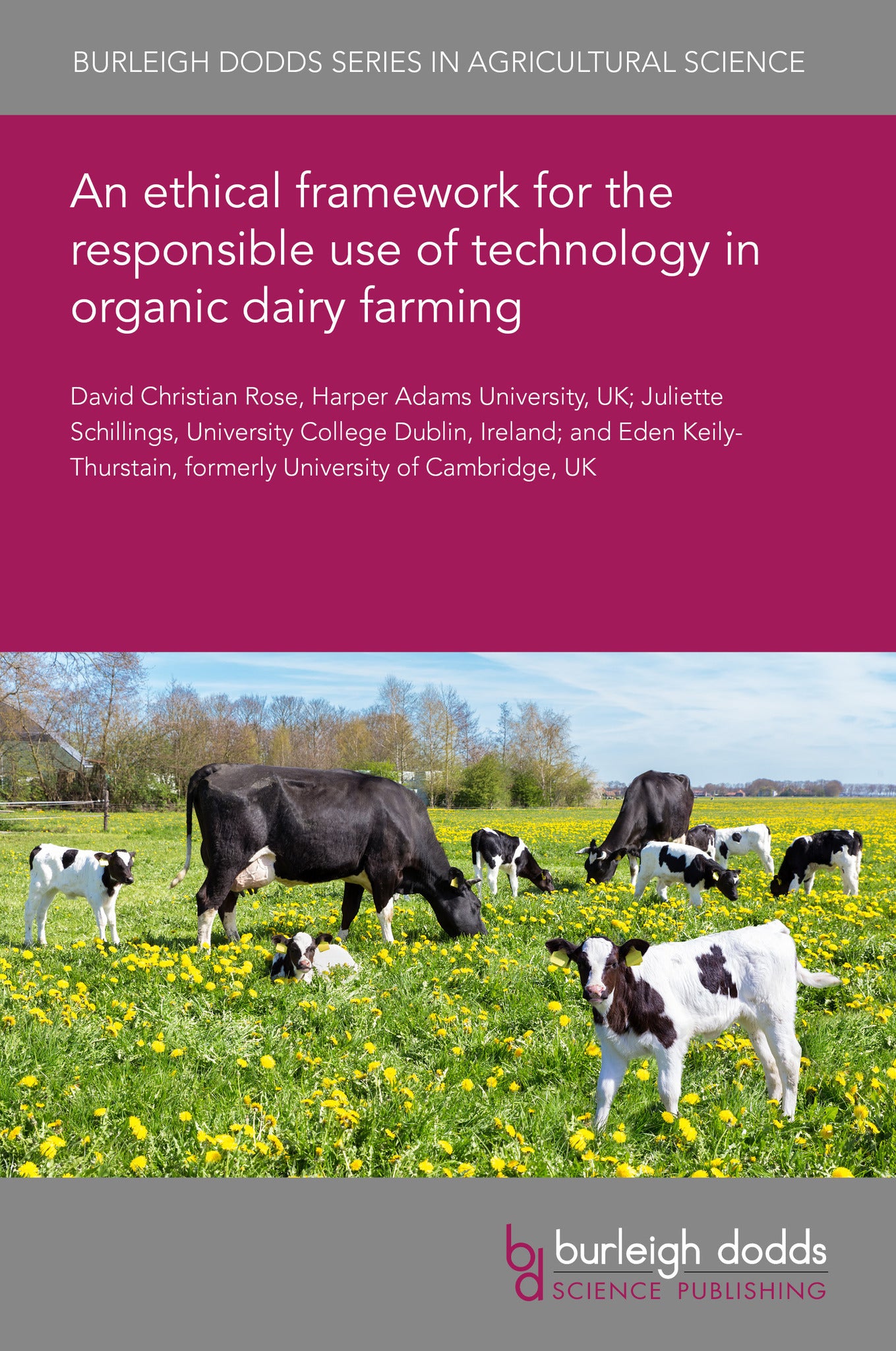We're sorry. An error has occurred
Please cancel or retry.
An ethical framework for the responsible use of technology in organic dairy farming

Some error occured while loading the Quick View. Please close the Quick View and try reloading the page.
Couldn't load pickup availability
- Format:
-
18 February 2025

Despite its potential benefits, organic farming has a complex relationship with technological innovation which has sometimes been associated with intensive forms of production. This chapter discusses the ways precision and other new technologies can fulfil the core organic values of health, ecology, care and fairness. It outlines a responsible innovation framework in assessing how new technologies meet organic values, based on the principles of inclusion, anticipation, reflexivity and responsiveness. The chapter uses the example of virtual fencing to show how the framework can be used in practice.

TECHNOLOGY & ENGINEERING / Agriculture / Animal Husbandry, Dairy farming, TECHNOLOGY & ENGINEERING / Agriculture / Organic, TECHNOLOGY & ENGINEERING / Agriculture / Sustainable Agriculture, TECHNOLOGY & ENGINEERING / Robotics, Organic farming, Sustainable agriculture, Agricultural engineering and machinery

- 1 Introduction: organic farming values and standards
- 2 Organic dairy farming and technology: key principles
- 3 Precision and other technologies in organic dairy farming
- 4 Establishing a framework for responsible innovation
- 5 Applying a responsible innovation framework: the example of virtual fencing
- 6 Using a responsible innovation framework to accept or reject new technology
- 7 Conclusion
- 8 Where to look for further information
- 9 References



